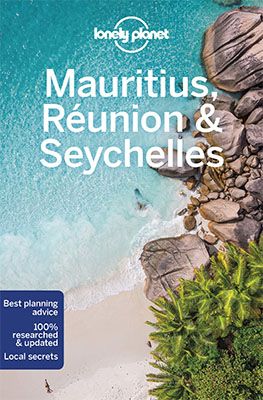Pamplemousses Botanical Garden
The town of Pamplemousses is not so far from the capital Port Louis. Pamplemousses has about 10,000 inhabitants and is a quiet village with beautiful colonial buildings from the French era. The French colonists had a second home here, because of the fresh air and fertile soil. This small town houses one of the main attractions of Mauritius: the botanical gardens. In full, the name is Sir Seewoosagur Rangoolam Botanical Gardens. If you’re on Mauritius, don’t miss this highlight!
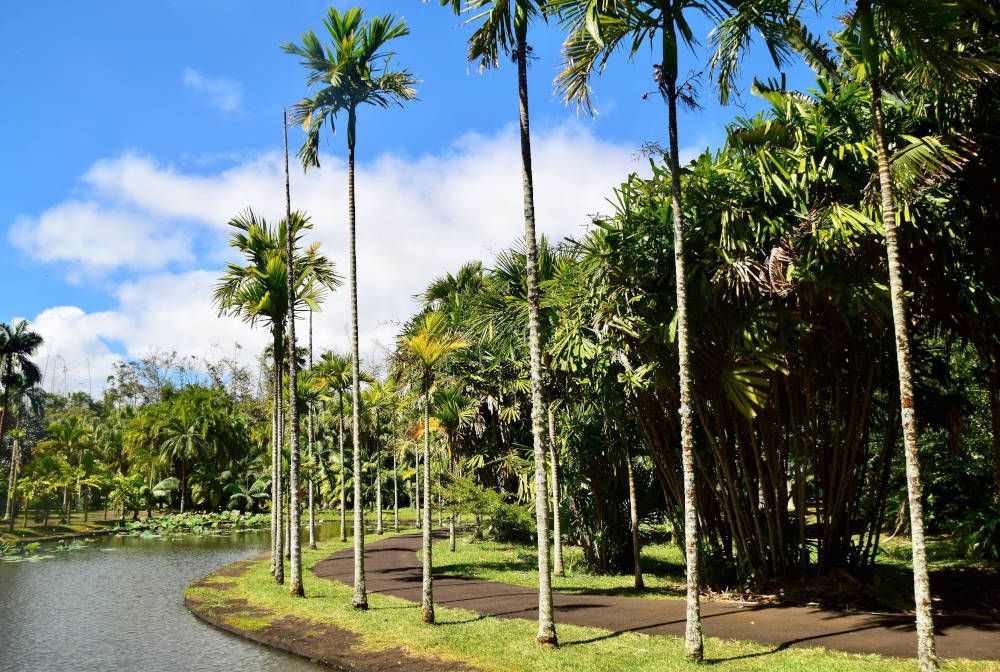
Pamplemousses Botanical Garden
The Botanical Gardens of Pamplemousses owe their name to the Prime Minister of independent Mauritius. The park was founded by Mahé de Labourdonnais in 1735. This senior official of the French East India Company made a first garden at his castle Mon Plaisir. In this building you can now view a small photo exhibition. Right next to it is also a memorial place where Labourdonnais was cremated. His ashes are not set up here but are scattered in the river Ganges in India.
The French horticulturist Pierre Poivre was important in the further development of the botanical gardens. Finally, the British horticulturalist James Duncan determined the final shape of the botanical gardens. He set up a large arboretum, with numerous palms and other tropical trees.
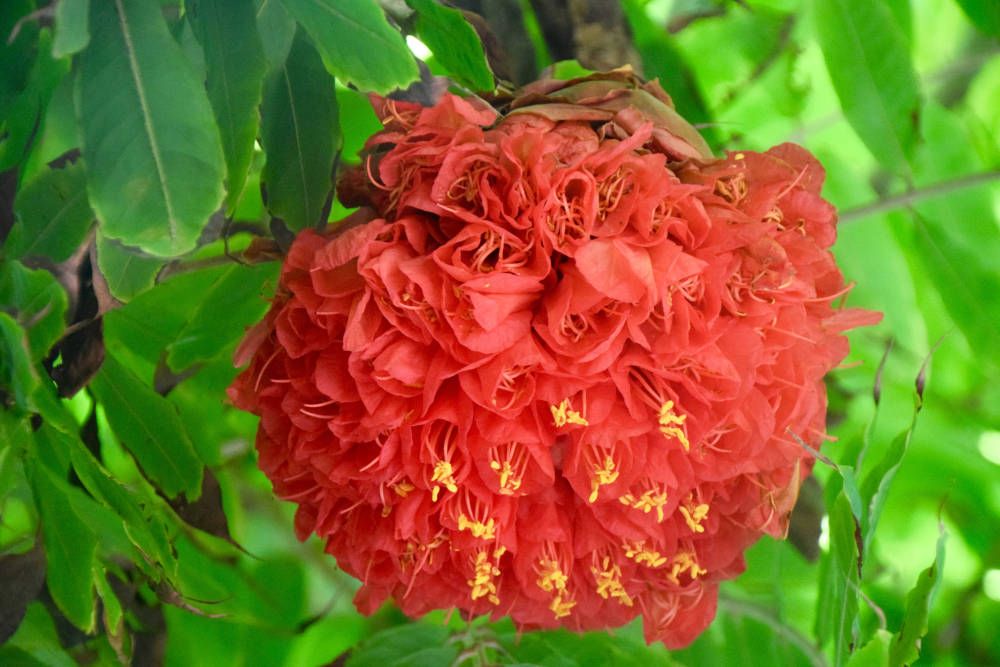
The botanical garden is very varied and extensive. You can admire hundreds of trees, (medicinal) plants, flowers and no less than eighty different species of palm trees. A quarter of these occurs exclusively in this region and seven species only in Mauritius. Only one specimen of some rare tree species is present. In the botanical gardens of Pamplemousses, there are also various baobabs, lots of giant bamboo, all kinds of spices, rubber trees and various hardwood trees, such as mahogany and ebony. There are also several beautiful ponds.
Finally, in the botanical gardens of Pamplemousses you will find various statues. Not only from the founders of the park, but also from various members of the British Royal Family. This is because they have planted trees in the gardens. For instance, Nelson Mandela, Indira Gandhi and Charles Darwin.
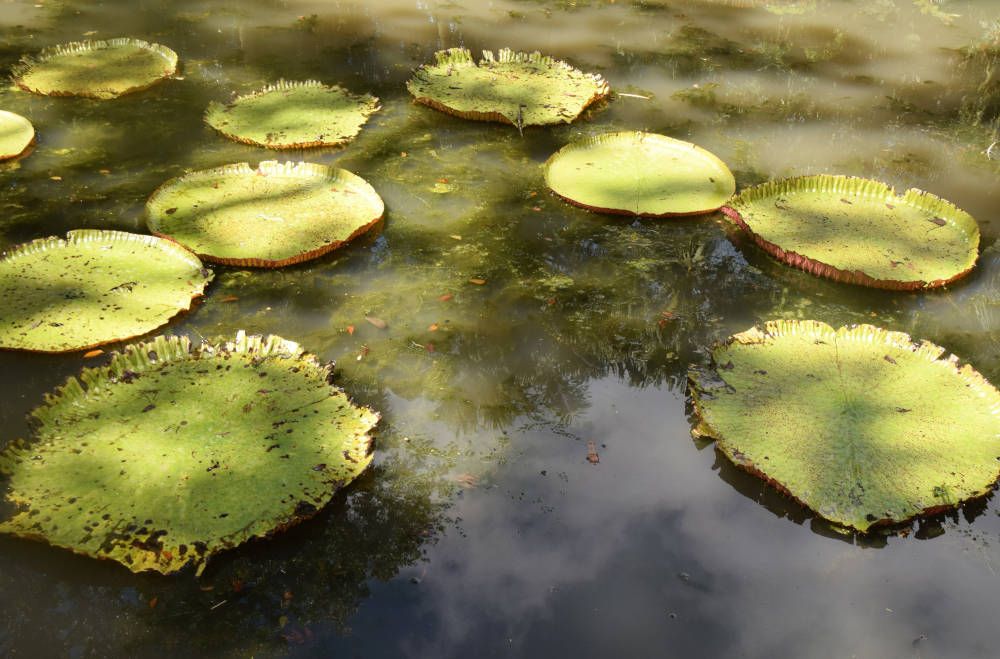
Highlight in Pamplemousses Botanical Garden: Victoria Amazonica
For us, the highlight of the park is the large, elongated pond with the Victoria Amazonica water lily. This is the largest species in the waterlily family. The plant is characterised by its leaves that are chestnut brown when they reach the water surface. They later turn green. Young leaves have short, inward-curling edges. Older leaves can reach a diameter of no less than three metres. They have a four to ten-centimetre-high upright edge and float on seven to eight-metre-long stems. The leaves are covered on the underside with powerful ribs and spines for a “defence” from the fish. The leaves have a load capacity of up to forty kilograms.
The Victoria Amazonica has a flowering form. What’s special is that each flower can only bloom for two nights. The first night a flower blooms it is white: this colour attracts the beetles that pollinate it. During the day the plant closes the flower. The next night the plant reopens the flower, which is then discoloured from light pink to dark pink.
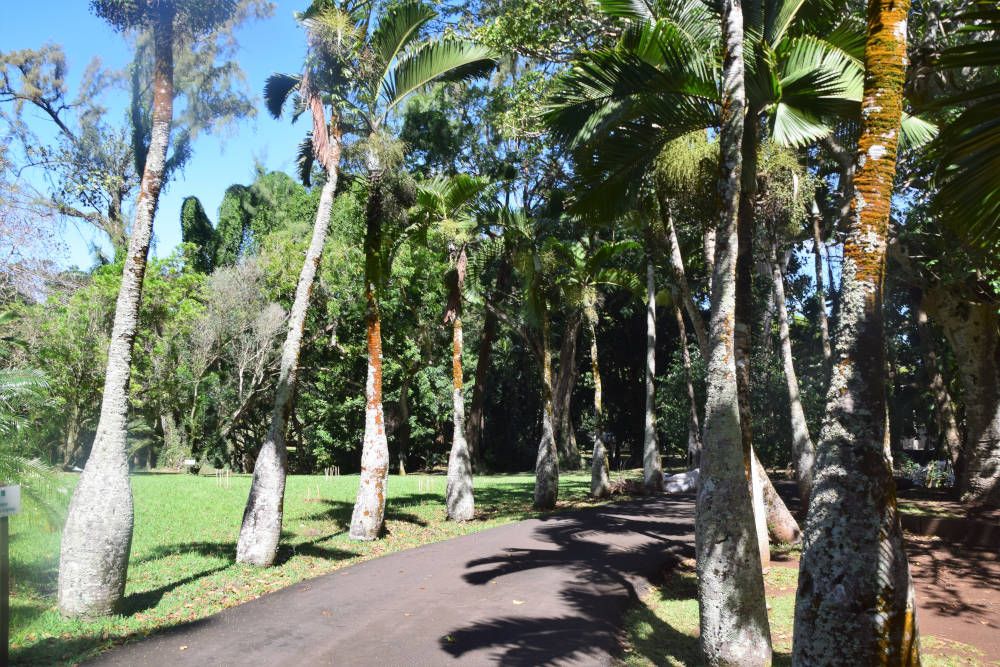
Pamplemousses Botanical Garden: Practical matters
- The botanical gardens are open every day of the year between 8:30 a.m. and 5:30 p.m.
- The entrance fee is 200 MUR per person.
- It is recommended to use a guide in the park. In one hour, the guide will show you all the highlights. Guides are available in several languages. Their knowledge of all the plants is vast and they tell you a lot of details, sometimes in a too cabaret-like way.
- After the tour by the guide you can still wander freely through the park.
- To visit the botanical gardens, make sure you give yourself at least two hours.
- You can walk off the paths and across the grass.
- For more information you can consult the official website of the botanical gardens of Pamplemousses.
- If you want to eat fresh palm hearts – and we do recommend this! – you can enjoy the delicacy at the restaurants opposite the main entrance.
- The botanical gardens are easily accessible by bus from Port Louis.
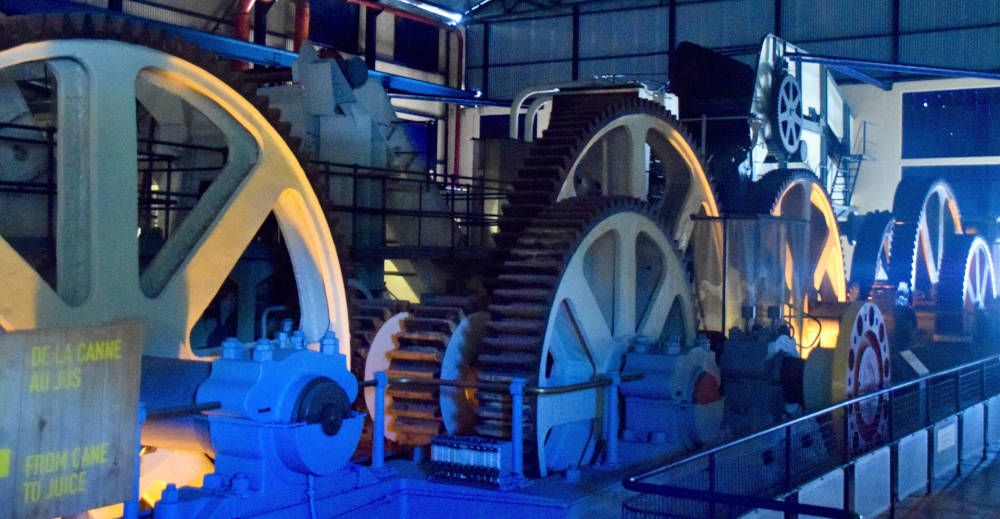
Museum L’Aventure du Sucre
If you are in Pamplemousses, a visit to the museum “l’Aventure du Sucre” is a must. Sugar cane cultivation has always been very important on Mauritius. A large part of the country is still furnished with sugar cane plantations. This beautiful museum does not only tell you all about sugar but colonisation, slavery and the history of rum production are also extensively discussed.
The museum could not have found a better location: it is housed in the original Beau Plan sugar factory. It was founded in 1797 and was in production until 1999. The museum is very interactive. You can download an app at the entrance that will guide you through the entire complex. Along the way, the app gives you all kinds of details about the different subjects. You can wander through the huge factory hall for a few hours. In addition to the various exhibitions, you can also see the large machines that were used in the past.
A visit to this museum can take at least three hours, if you want to study everything carefully. But it is definitely worth it, we thought it was a very interesting and intriguing museum. It is open daily from 9:00 a.m. to 5:00 p.m. The entrance fee is 400 MUR per person. With the already-mentioned app you can listen to everything again on your smartphone.
At the end of the museum you will have the opportunity to taste various types of rum and sugars. For this it is necessary to show the proof of payment of your ticket. So not your ticket, but the receipt is what entitles you to participate in the tasting. And don’t miss it! More information about l’Aventure du Sucre.

